After Christmas, Distant Era acquired an optical spot—a tool for creating patterns of light and shadow. The optical spot fits on the end of a studio light, and you cover different portions of the light to project shadow patterns. I didn’t necessarily need an optical spot, but it looked like fun, and I wanted to explore the possibilities it offered.
In January, I told Elizabeth that I thought it would be cool if we did a special session for her What the Weird Sisters Saw production. (Here are the production photos, and the archival session from previous posts from The All Worlds Traveller.) I mentioned a gobo pattern I saw that had shadowy tree branches. Elizabeth immediately bought the gobo packs and told me to book a session for the sisters. In March, after one of their Sunday shows, we experimented with the optical spot to see what we could make.
Hot Hot Optical Spot
Prior to our Weird Sisters session, I used the optical spot for the first time in a headshot session with Evan Jackson, the show’s director. The first thing I noticed was that the optical spot can get very hot very quickly. Depending on the camera settings, an optical spot can require a lot of power to make its patterns distinct. To circumvent this problem, I used an LED light with the optical spot, and that seemed to work ok.
Weird Sisters in the Woods
With one experiment under my belt, I was ready to practice with the Weird Sisters. Over the course of the evening, we tried three different setups.
In our first setup, we shot against a brown fabric background that felt appropriate to the mood of the show. You can see how we varied the hardness/softness of the branch shadows. I felt the hard shadows worked best in black-and-white images where contrast is everything. The softer shadows worked well for portraits generally. In either case, positioning of the shadows on the subject is key.
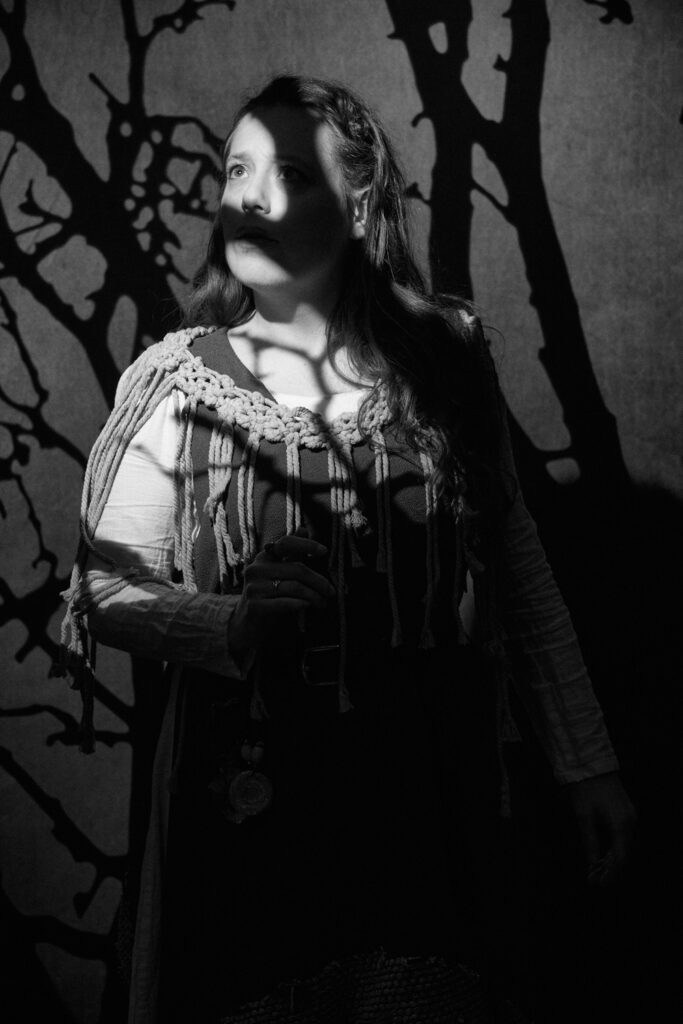
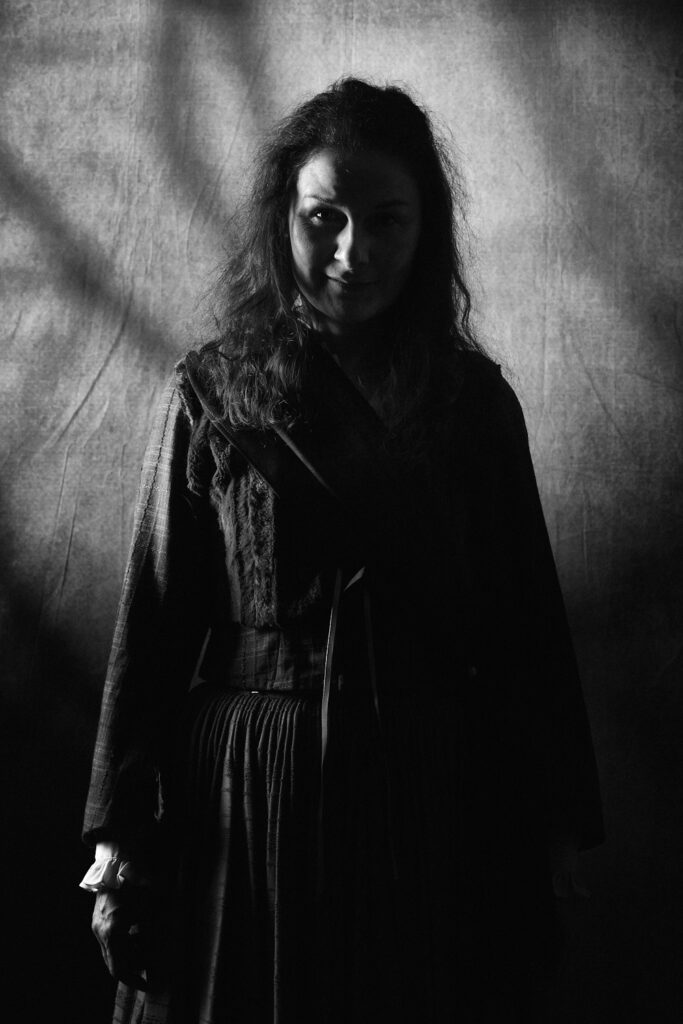
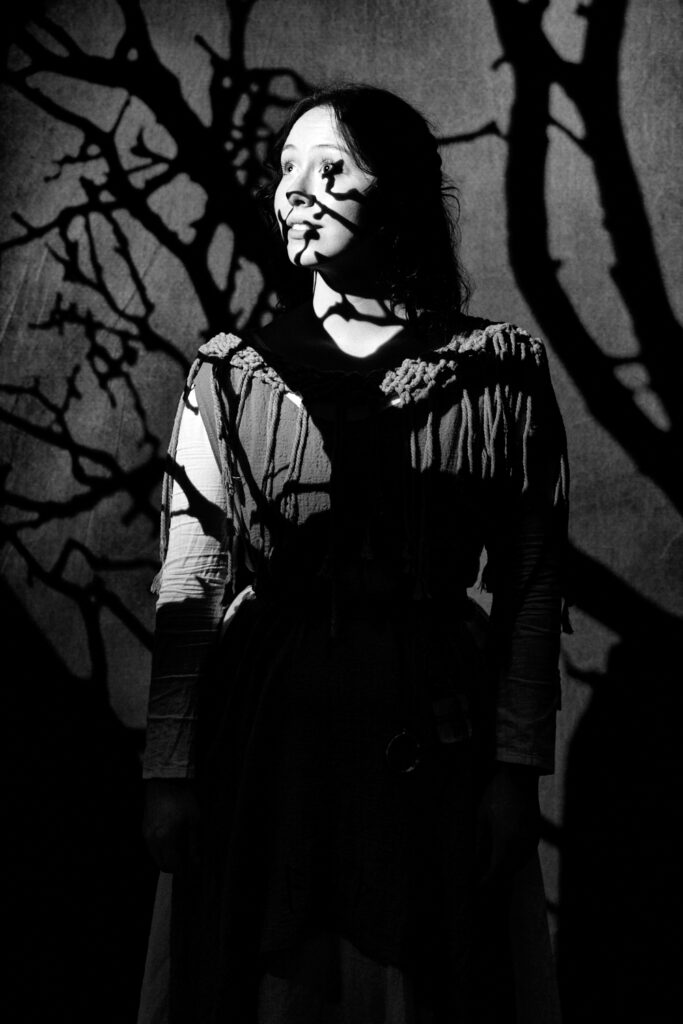

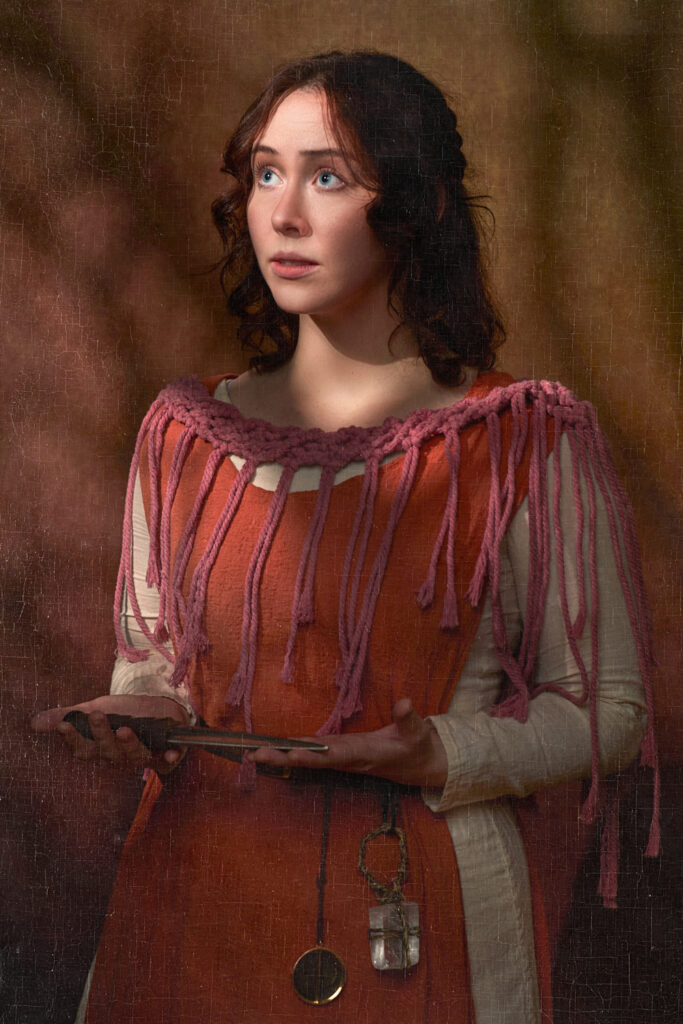
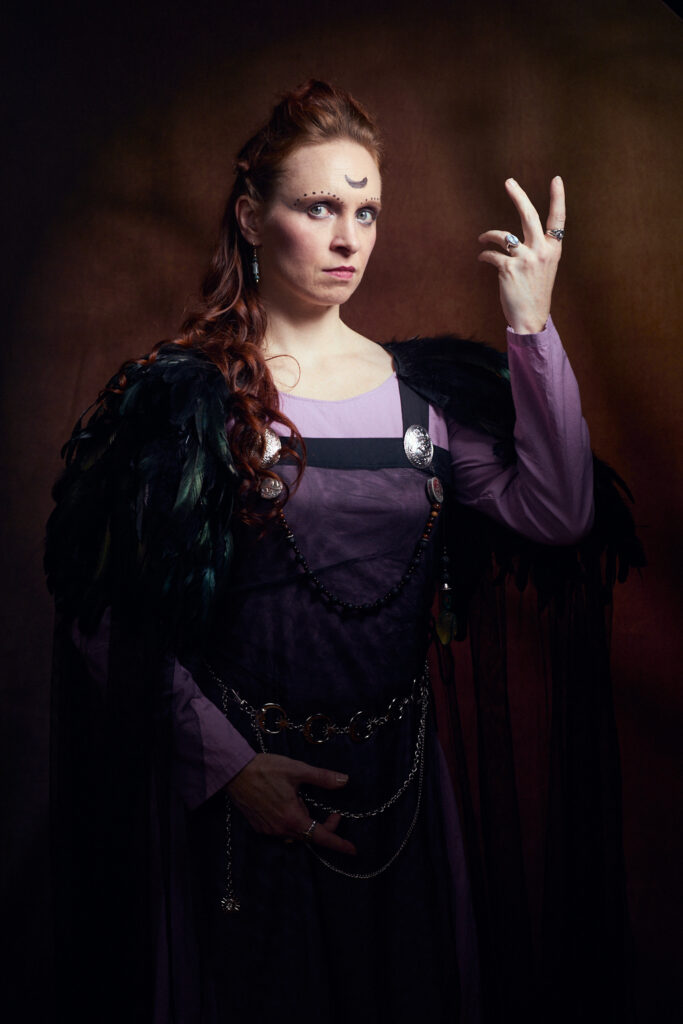


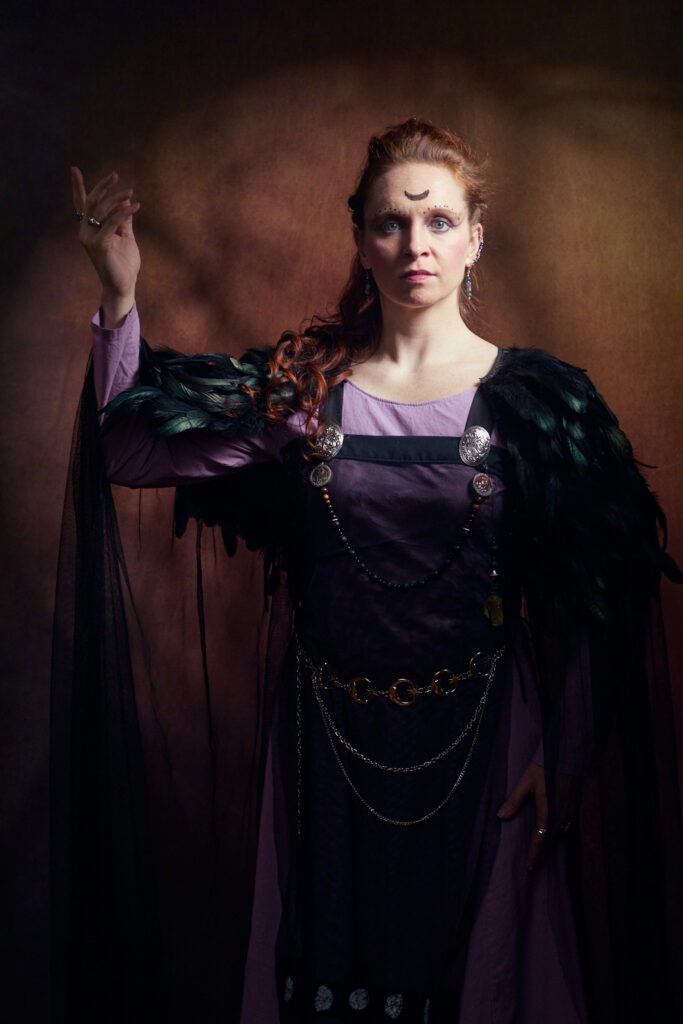


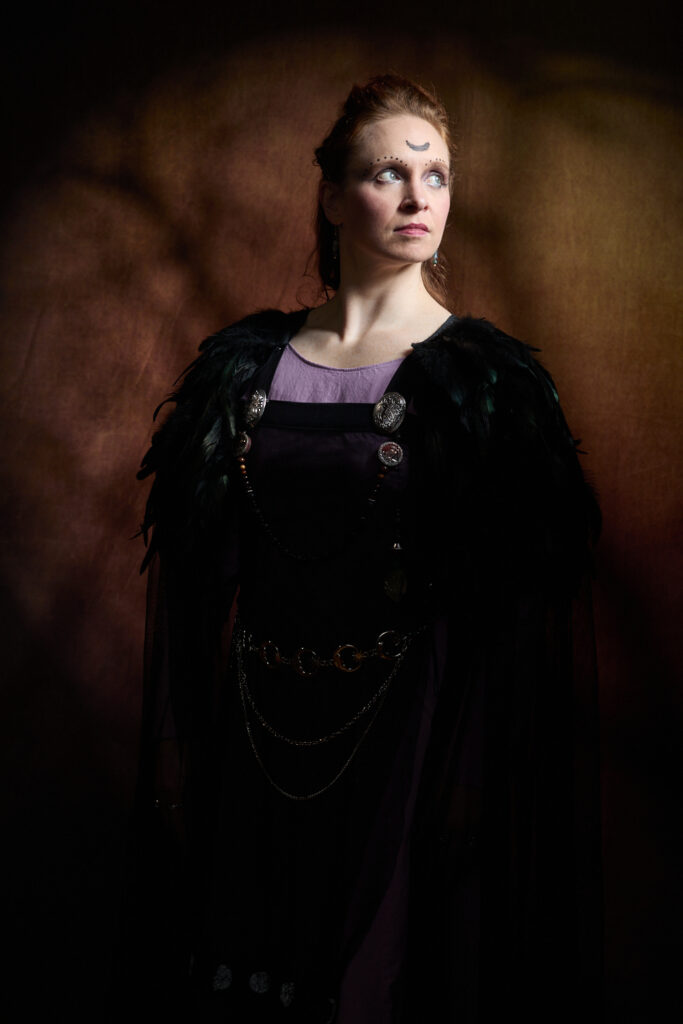
For our second setup, I wanted to combine a gel with the gobo and see what we could make. We tried some cool-colored gels with a leaf gobo. We experimented with hard and soft edges on that one as well, to see what kind of range we had. Once again, the black-and-white images were as appealing as the color images but in different ways.

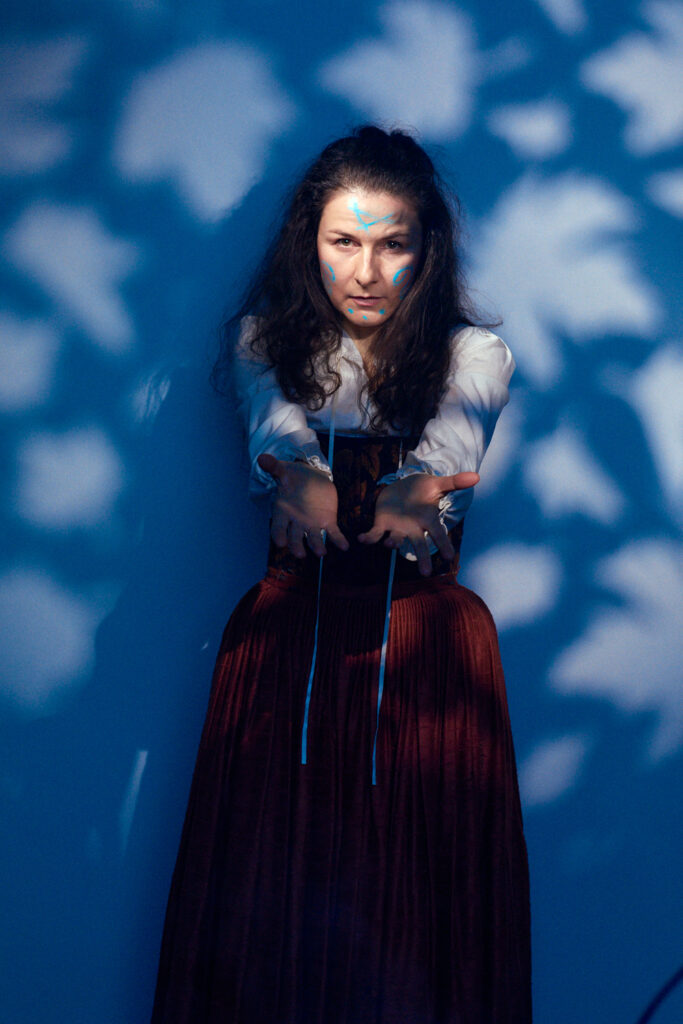
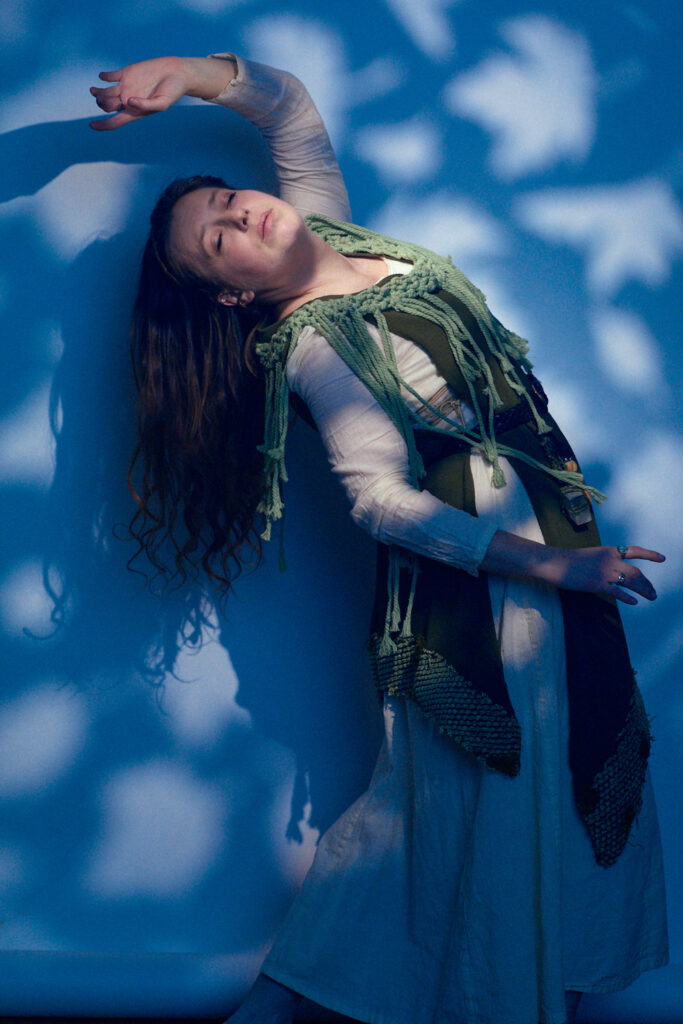


For our third setup, we went all out, adding even more colored gels. This one probably had less to do with the production, but at that point in the evening, we were just experimenting. Why not throw up a red window and then use blue lights on the subjects? It was a mood. We took a few of these, but it was getting late, and after these experiments, we decided to wrap it up.

Experimentation and Play
Experimentation is key to development in every skill, and this session was a fun way to play around with a fun lighting tool to see how it worked so that I can start to incorporate it into professional sessions. In my sparse free time, I’m continuing to work on another experimental series I hope to show in the not too distant future. Thanks to Elizabeth MacDougald, Mara Kovacevic, Jennifer Mohr, and Jamie Redwood for their willingness to experiment and play with lights!

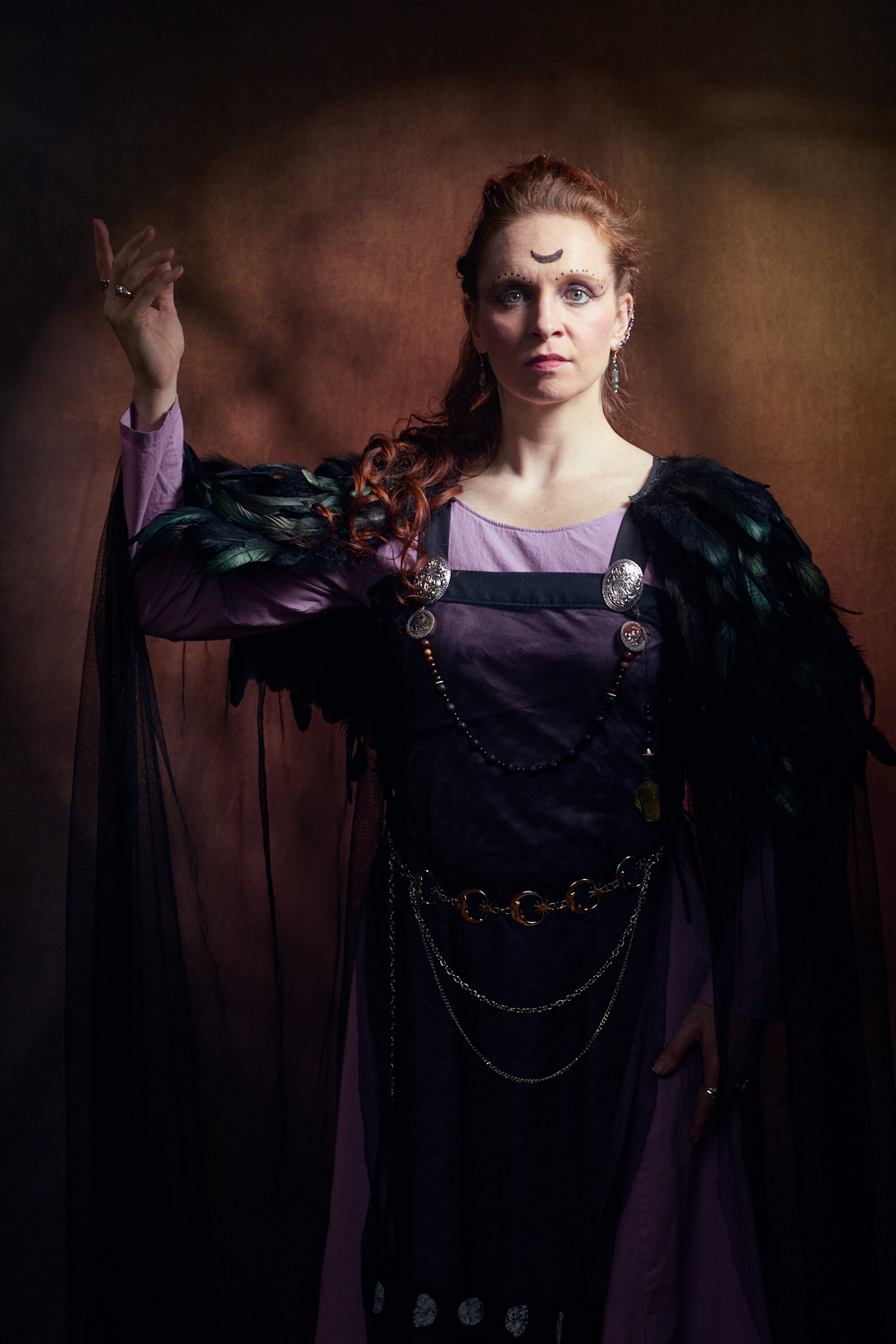
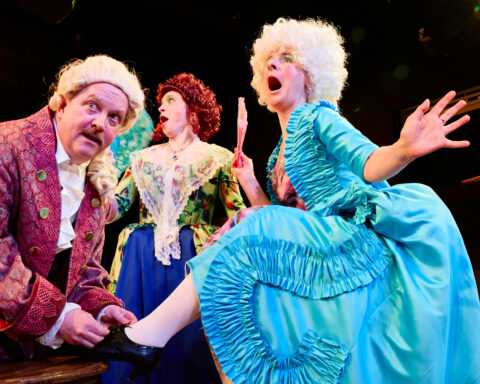
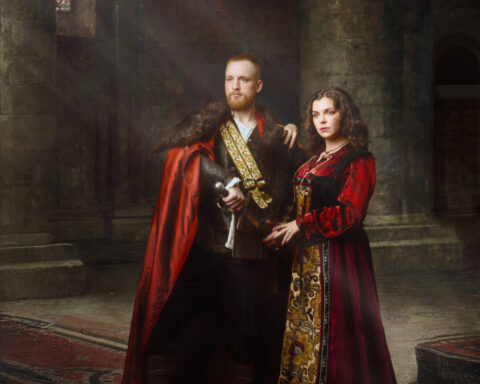

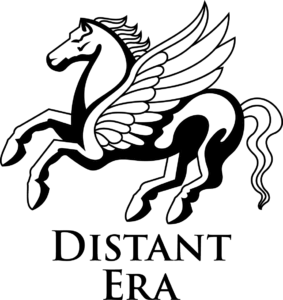
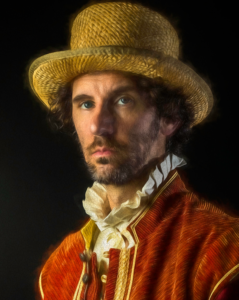
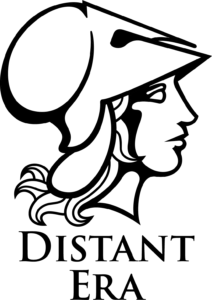
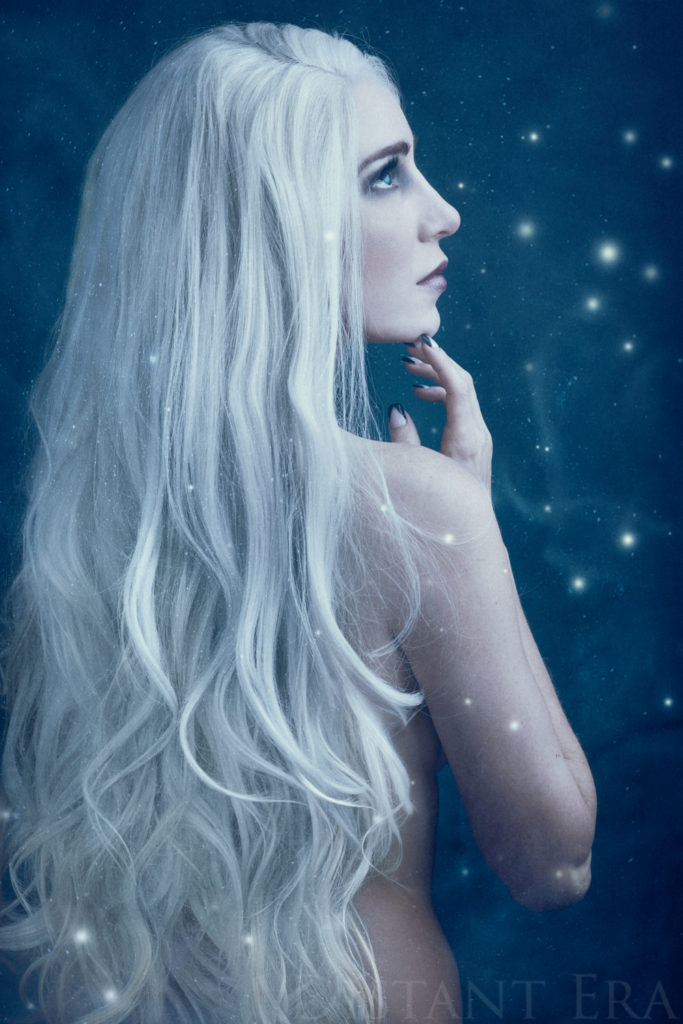
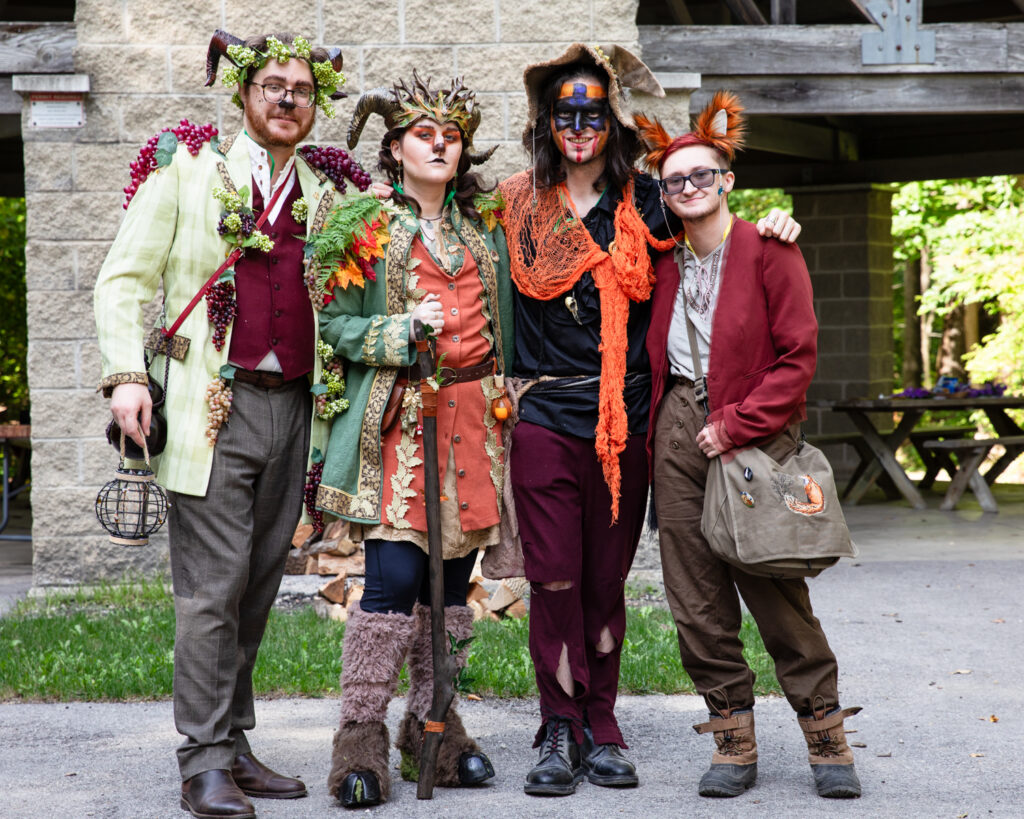
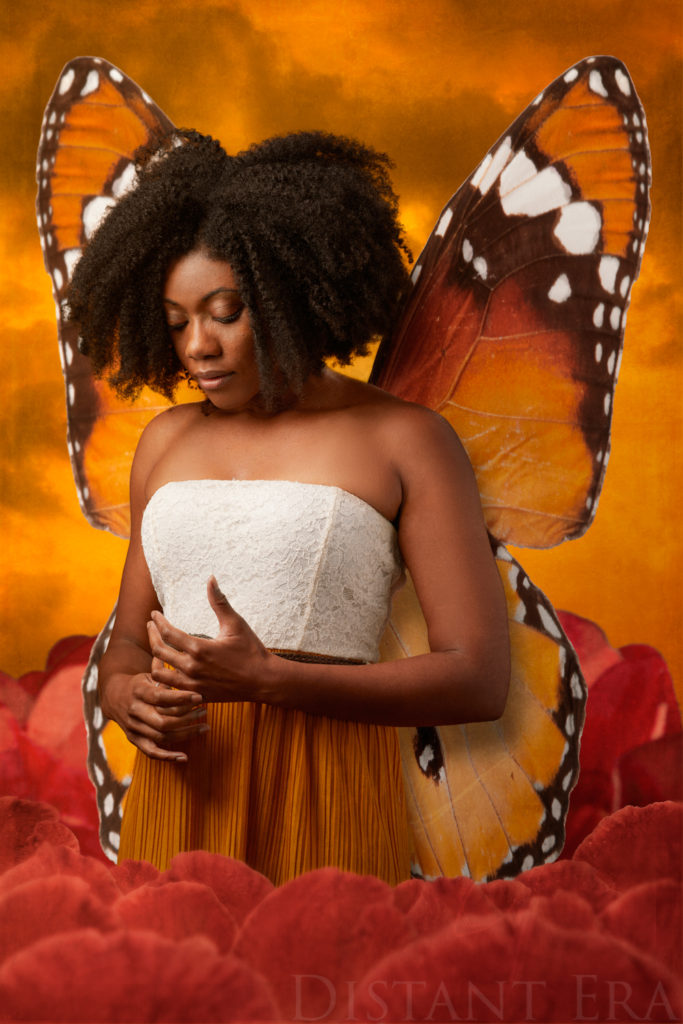
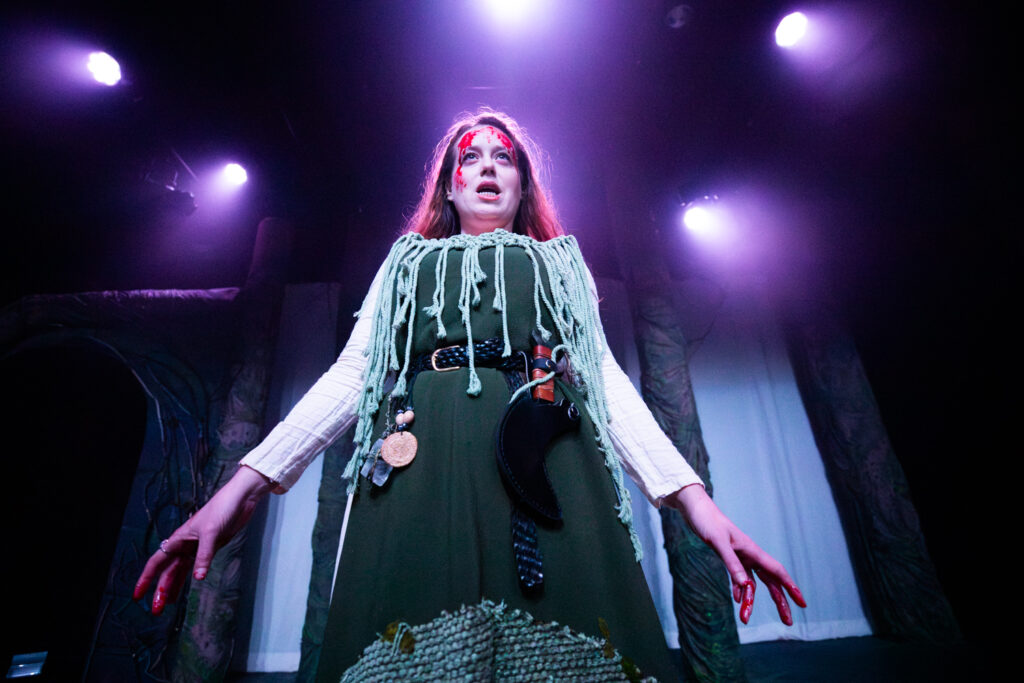

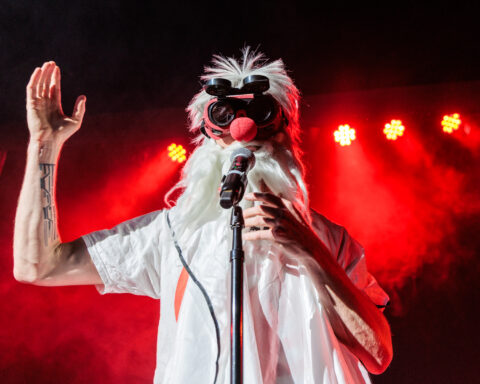
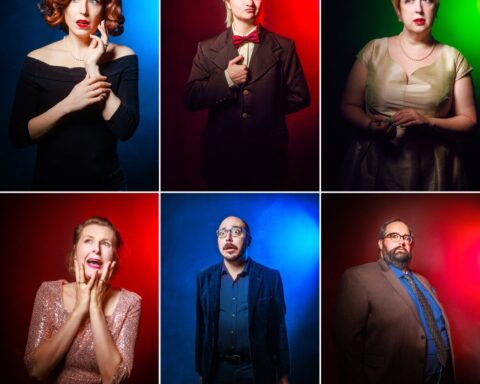
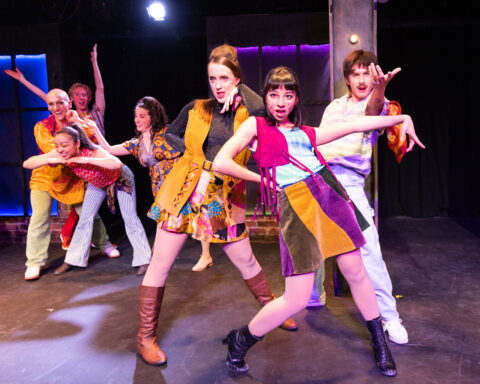

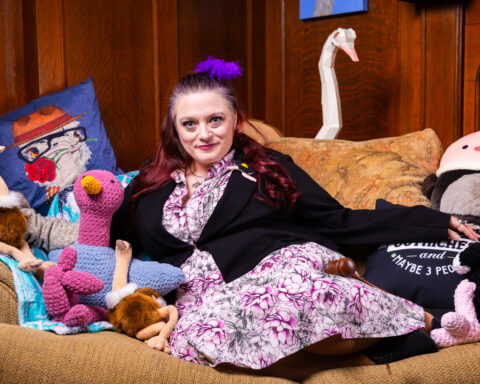
Follow Me